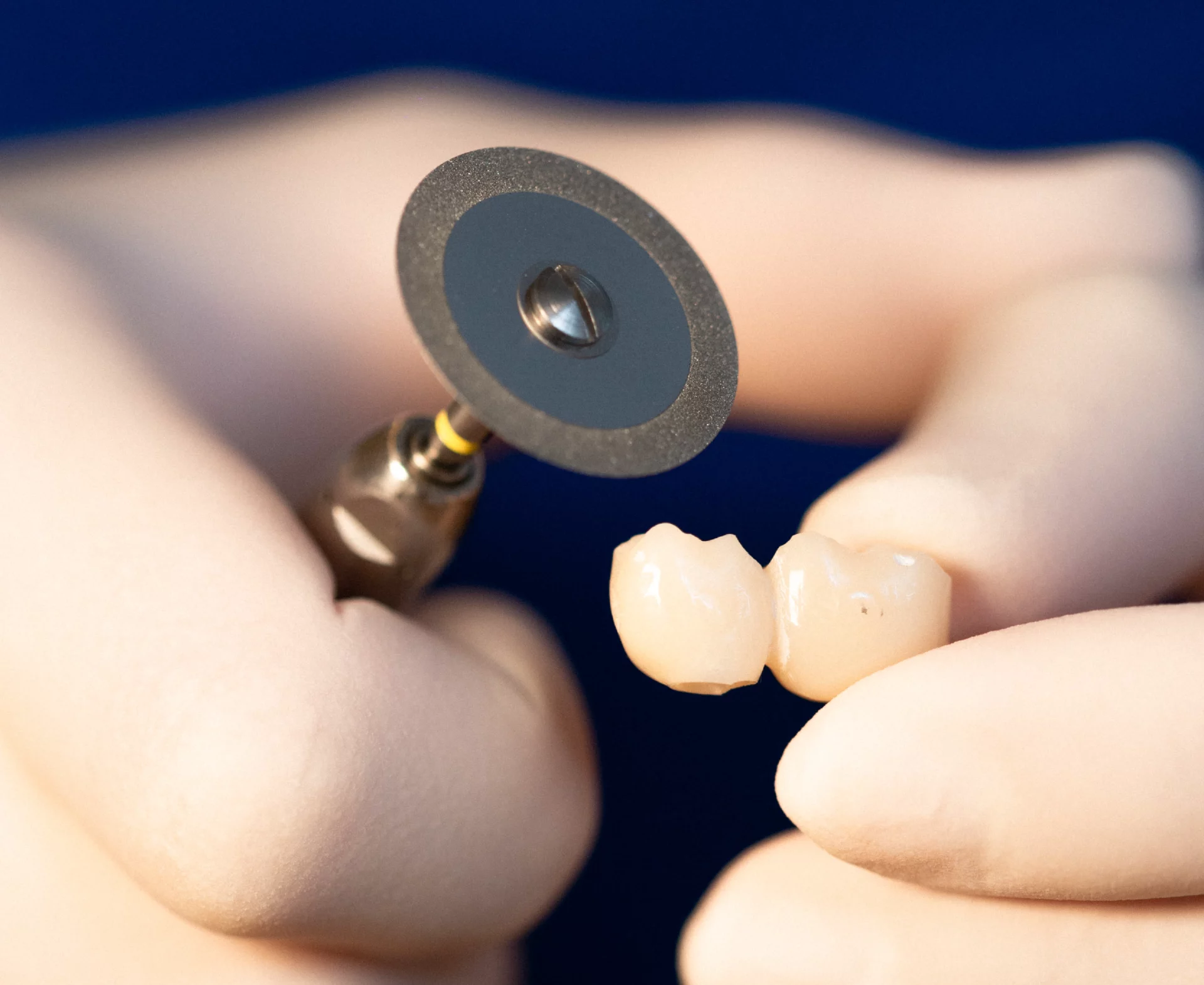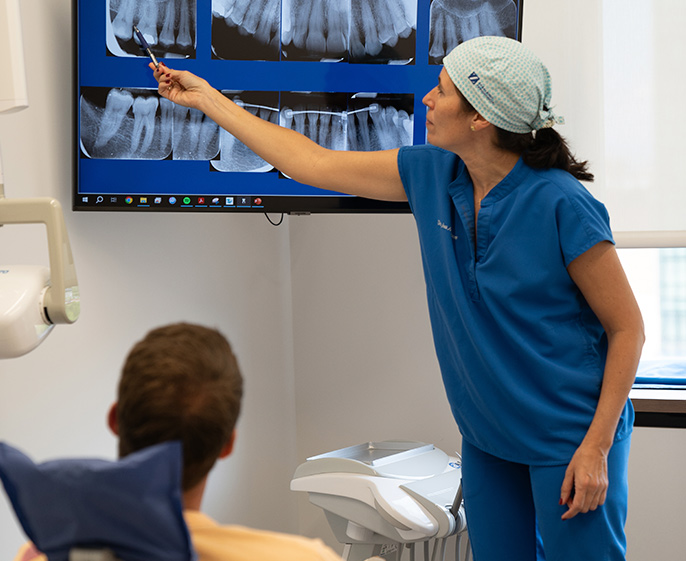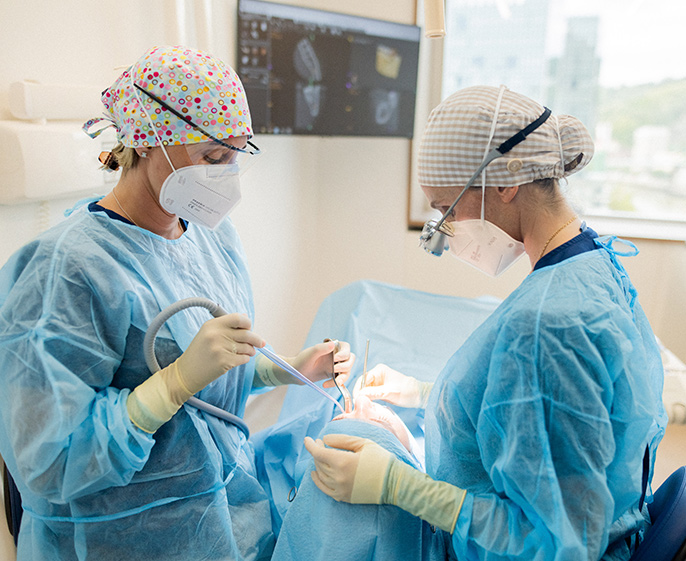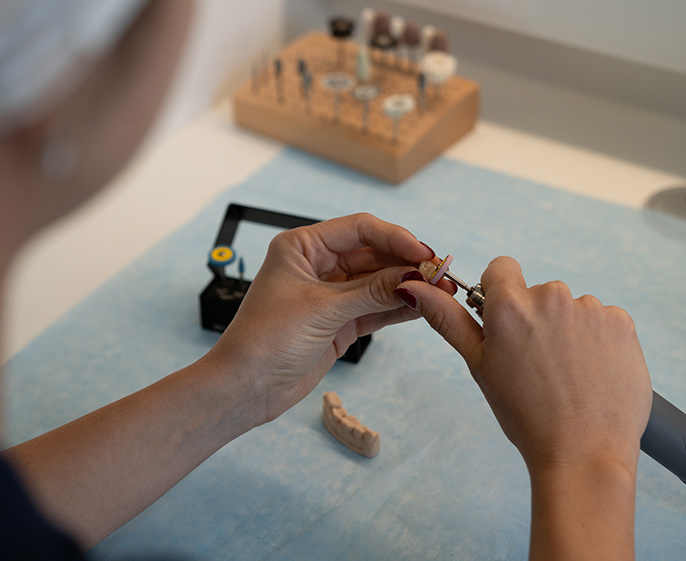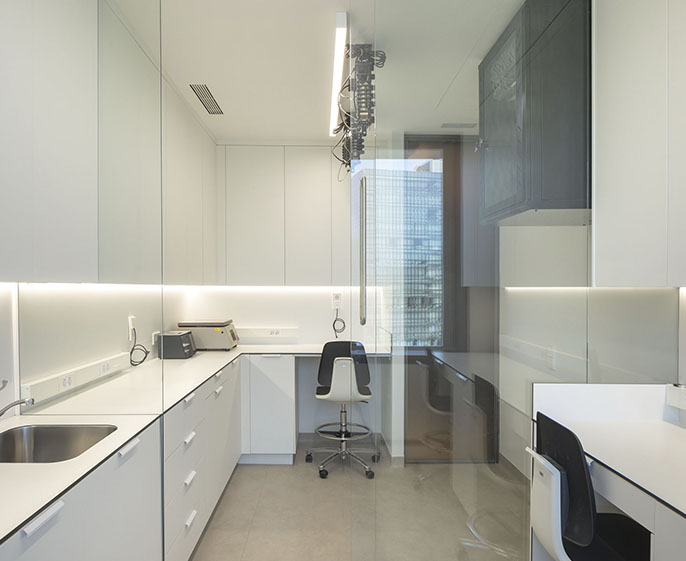Single dental implants
A dental implant is an artificial root used to support or anchor teeth. In most cases, they are made from commercial pure titanium, a biocompatible material that is accepted by the human body without causing rejection reactions.
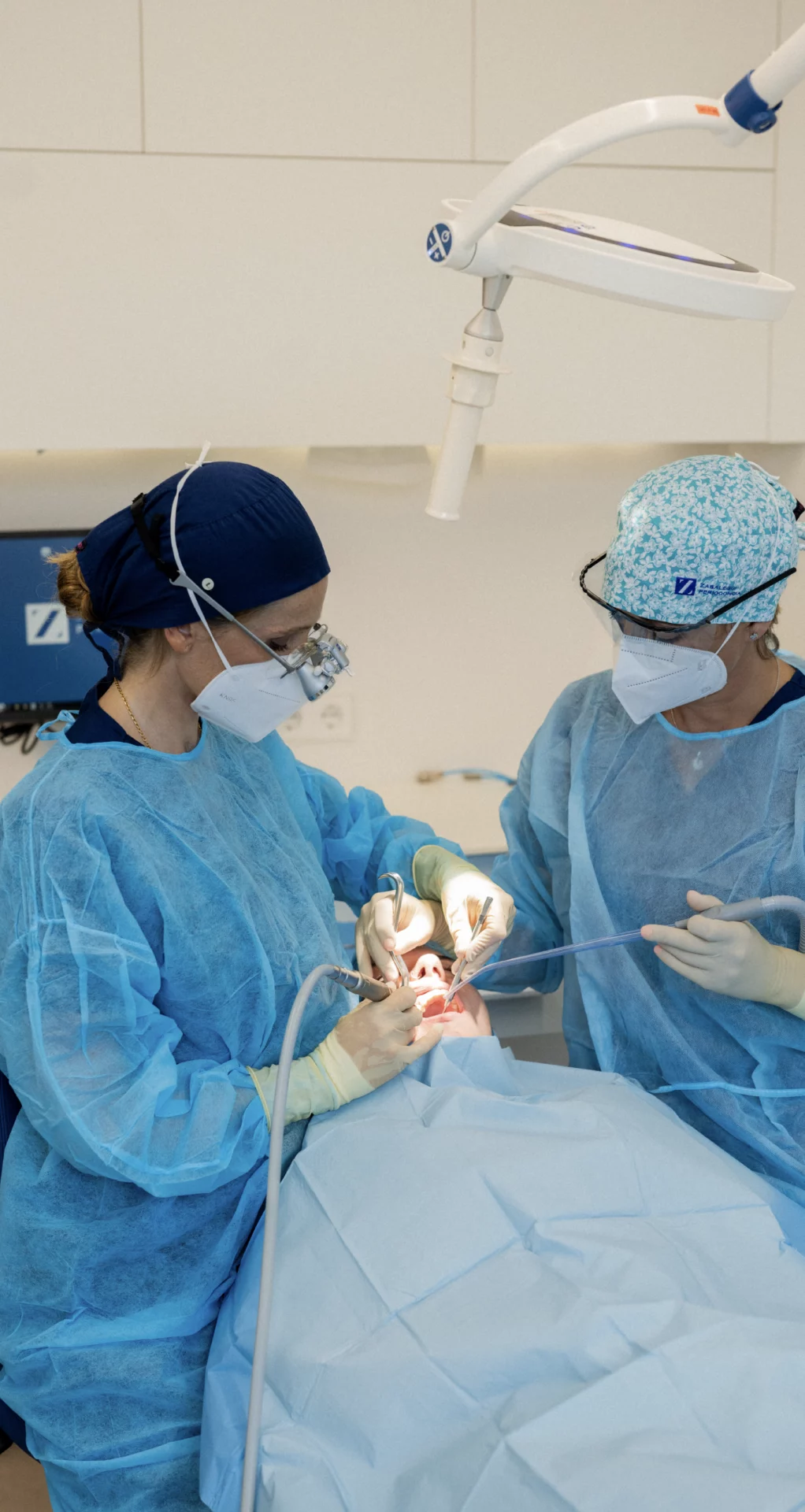
Types of dental implants
Dental implant placement
Nuestros tratamientos de implantes dentales en Bilbao se inician en la cita de diagnóstico en la que el dentista, periodoncista o cirujano determina las posibilidades y alternativas de tratamiento dental.
Las actuales técnicas radiográficas con imágenes tridimensionales 3D a través de la tecnología de haz cónico, permite al profesional medir con precisión milimétrica la anatomía y volumen óseo de la boca del paciente.
At our dental clinic in Bilbao, we carefully plan the treatment of choice by first simulating the prosthesis using a ‘diagnostic wax-up’ (wax teeth for study) in the laboratory.
Once the decision to begin treatment has been made, the implants are placed under local anaesthesia in the area of the mouth that will receive treatment. It is a painless and quick procedure, which is increasingly performed with minimal incisions (minimally invasive surgery) and leaves no trace after the operation.
The placement of the dental prosthesis on the implant is carried out according to two treatment modalities or protocols: either the traditional protocol of loading the implants between 8 and 12 weeks of integration or what is known as immediate loading on implants.
- The first is still recommended for replacing one to several teeth on a single side of the arch.
- The second is recommended for cases involving a complete arch, either lower (the most common) or upper, provided that bone quality allows it.
During the healing period, the patient will be able to maintain adequate dental function by using a temporary prosthesis or denture. It is essential for improving the prognosis of the treatment that the implants remain at rest during the formation of the union with the jawbones.
The treatment is completed with the placement of the final prosthesis or denture, always after checking the long-term stability of the implants. This is done through clinical stability tests, radiographic bone integration tests, and an objective stability tool called ‘Resonance Frequency Analysis’ or ‘Ostell®’.
Specialists in dental implantology
About single dental implants
Definition
When a tooth falls out or is lost, there are several alternatives for replacing it. Paradoxically, the least invasive way to replace it is by placing single dental implants, which are artificial roots made of pure titanium in the shape of a screw.
Advantages
The advantage of dental implants over other alternatives is that they preserve and therefore do not damage the healthy enamel of adjacent teeth. They restore lost chewing function, allow you to show off a natural-looking mouth and enhance the beauty of your smile.
Procedure
There are two versions of the procedure: immediate implants, which are inserted at the same time as the tooth extraction, or delayed implants, which are inserted after the socket or hole left by the tooth extraction has healed.
Procedure
Types of single dental implants
Immediate implants
Los implantes inmediatos han demostrado tener el mismo pronóstico o porcentaje de éxito que los implantes convencionales o diferidos.
La principal ventaja del procedimiento consiste en realizar todo el tratamiento en una sola cita.
Esta incluye la extracción del diente, limpieza del alveolo, colocación del implante y la reconstrucción de la encía del implante.
En ocasiones va acompañado de un injerto de su propia encía para que el resultado estético sea natural, evitando las deformaciones o hundimientos de la encía que ocurren en todos los casos en mayor o menor medida.
There are some situations in which this technique cannot be used: the presence of acute infections or insufficient bone in the tooth to properly anchor the implant.
Deferred implants
Deferred implants are those that are placed after the alveolus or hole left by the extracted tooth has healed. This healing process takes between two and four months in non-smoking patients and is always accompanied by gum recession, which must be reconstructed at the implant placement appointment or at subsequent appointments.
After the implant healing period, which varies between 8 and 12 weeks on average, we confirm the success of the treatment through stability tests and digital X-rays. We will measure the hardness of the bone over the implant using a high-precision device called Ostell® (Resonance Frequency Analysis) and, if the stability indices indicate it, we will proceed to confirm the implant’s readiness to begin the process of manufacturing the final tooth or prosthesis.
Throughout this treatment period, the patient will wear a temporary tooth at all times to replace the one that has been extracted, allowing them to chew, speak and look normal.
